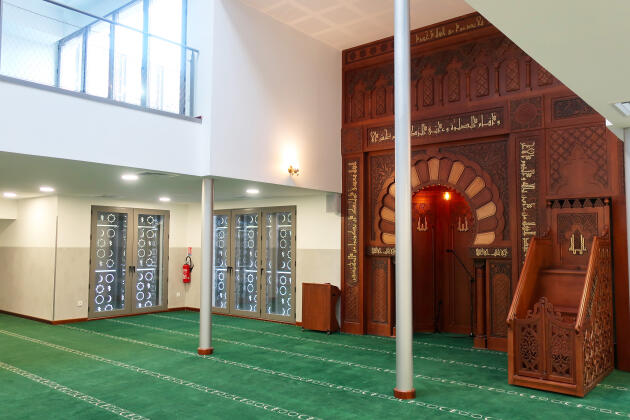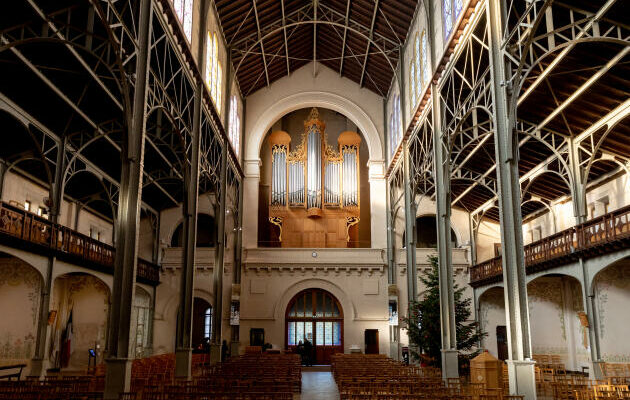THE MORNING LIST
We are still building places of worship where, as in the time of medieval cathedrals, architectural ambition mixes with religious expression. Once upon a time…
The Notre-Dame du Travail church, in Paris
The Romanesque stone facade of the Notre-Dame du Travail church, located in the 14e district of Paris, behind Montparnasse, and classified as a historic monument since 2016, is quite ordinary. Its interior, designed to accommodate the workers who settled en masse in Paris at the turn of the 20th century in a familiar setting.e century, however, makes it one of the most astonishing modern churches in the capital.
Abbot Roger Soulange-Bodin (1861-1925) and architect Jules-Godefroy Astruc (1862-1955) in fact designed in 1899 a place evoking the factory, where metal (ten years earlier, Eiffel built a strange tower) and wood mingle in an industrial framework, topped by a framework of exposed beams.
Many elements come from the demolition, the same year, of the Grenelle slaughterhouses, in the 15e borough. Art Nouveau style paintings celebrate the working professions in side chapels. The church also houses one of the so-called “Sevastopol” bells, brought back in 1856 by General MacMahon from the Crimean War – the other four having been offered to Notre-Dame de Paris.
The Annour mosque, in Montpellier

She chose to justify her name. After seven years of work, the very bright Annour mosque, “mosque of light” (nourin Arabic), opened to the public in February 2023 in the Gambetta-Chaptal district, after demolition of the previous building, dark and degraded, dating from 1987. Designed by the Montpellier architect José Hamerman, it above all displays a magnificent metal facade , pierced with stars, crescent moons and suns, motifs repeated many times.
It can now accommodate 600 faithful, over four floors and 420 square meters, in large prayer rooms. An entire floor is reserved for women. The project was carried out in part thanks to donations from the faithful (1.8 million euros out of the 3 million of the final project), without foreign contribution, as its initiators repeat, wishing to avoid the controversies which taint other buildings (the Annour Center in Mulhouse, in Haut-Rhin, for example), singled out for having accepted Qatari funds.
You have 60% of this article left to read. The rest is reserved for subscribers.
